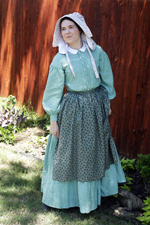
1860s Work Dress and Accessories
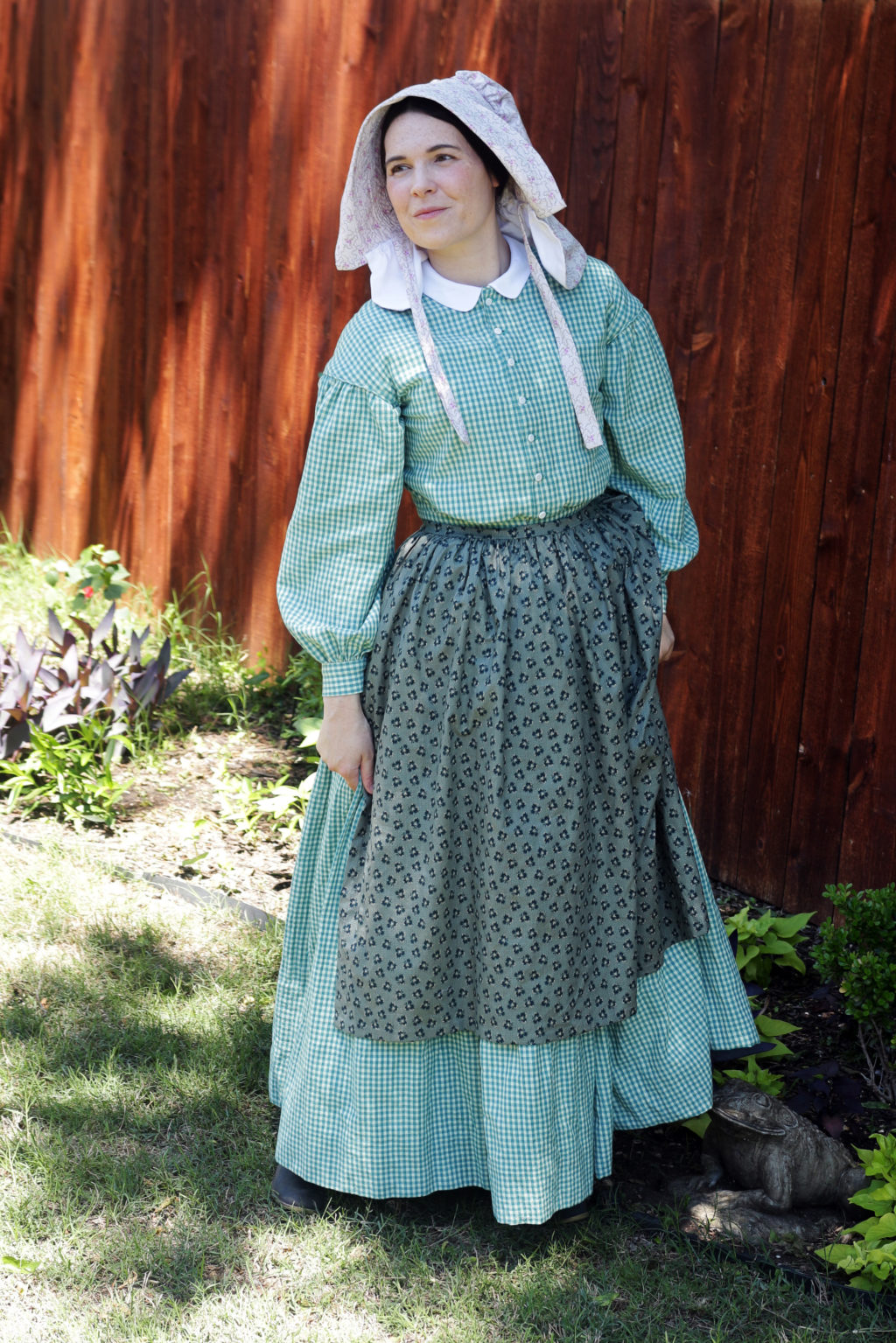
I started working on this costume in 2013 (!!!) and finally finished it last summer. It was the first costuming project I ever started and I abandoned it halfway through when I realized the pattern I had bought (thinking it was a casual work dress) turned out to be a fancy summer dress. In my defense, the fabric they used for the sample on the envelope cover is quite plain and beige, not fancy-looking at all.
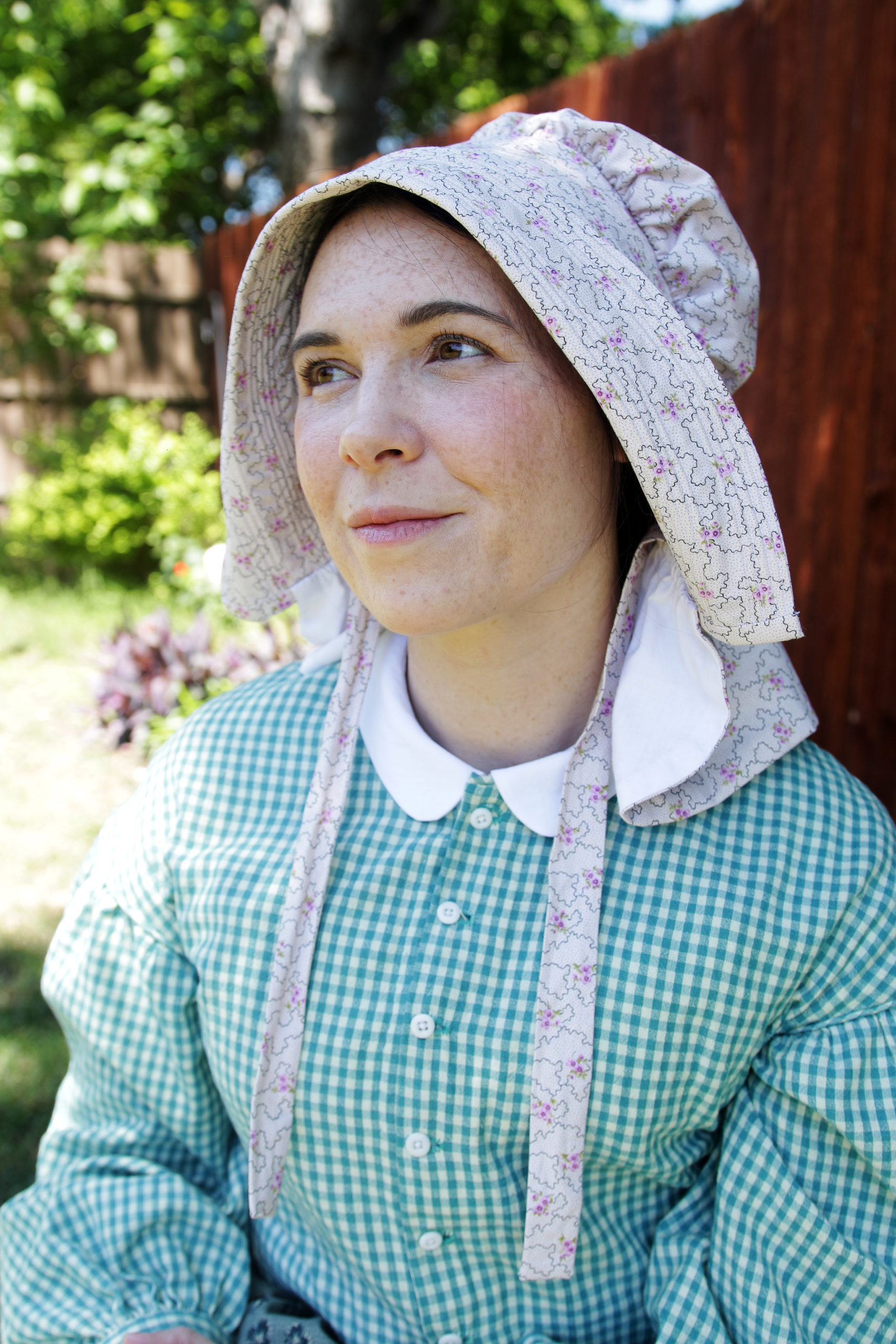
I decided to give it a second change and took the whole thing apart, replaced the piping, re-cut the sleeves out of extra skirt material, re-sewed and re-hemmed the skirt, and finally added buttons.
Then earlier this year I completed some accessories to go with it: a plain cotton collar to protect the neckline, a simple cotton print apron, and a cotton-print corded sunbonnet.
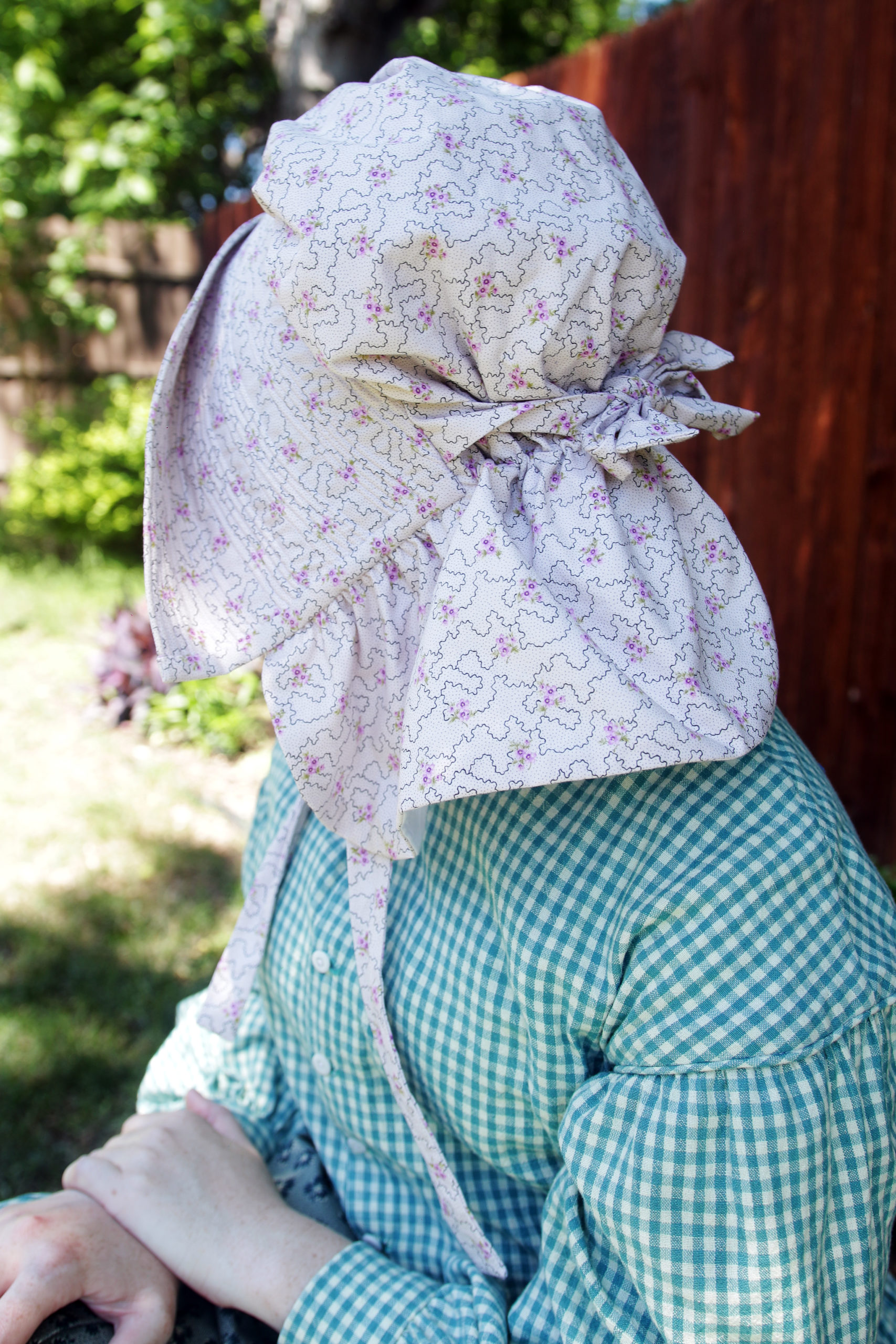
The fabric for the apron and sunbonnet came from Maggie May Fashions. Antique porcelain buttons on the dress came from Etsy. As usual, these projects were a mix of hand and machine sewing.
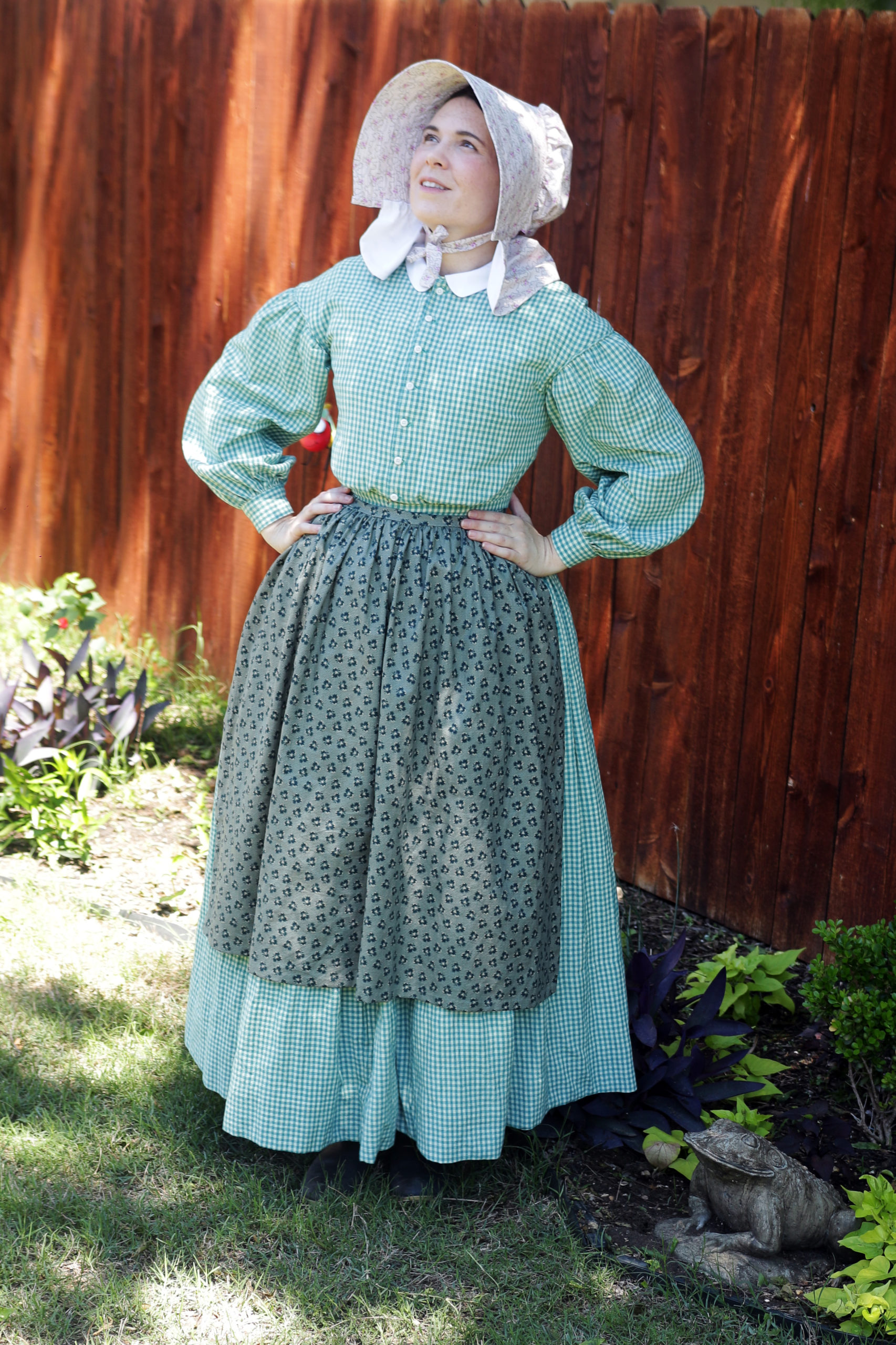
I’m wearing most of my mid-victorian underthings with this dress along with an Edwardian corset cover to help poof out the gathered-front bodice and smooth the corset lines. Without it, the front looks a little droopy. Looks like I need to make a Victorian-era corset cover in the future!
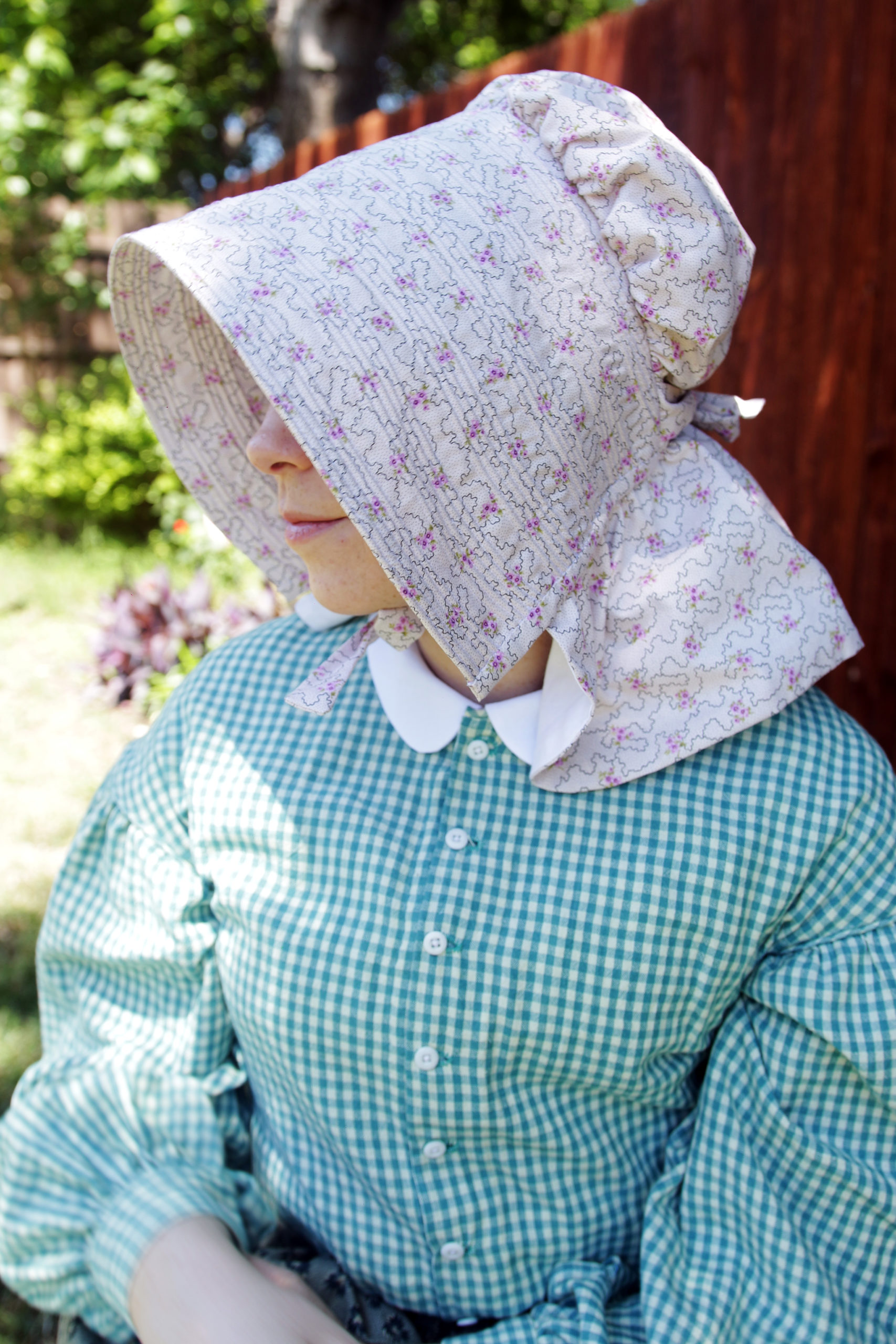
You can watch the making-of video for the work dress and the accessories on my YouTube channel.
Whenever I see mismatched accessories, my first reaction is to think how much “better” they’d look coordinated. But your work (and others’) is a great reminder that nobody lives in a fashion plate! Matching hats and aprons are lovely, but simply not possible if you have limited fabric or items wear out at different times. It’s far more practical to use (and reuse) what you have. Plus, you can end up with surprising color and pattern combinations you might not have picked otherwise. What I’m trying to say is, I’ve been conditioned to see order and consistency as pleasing, but it’s important to see the beauty in function, thriftiness, and pragmatism too. Thank you for continuing to challenge my notions about aesthetics with your historical sewing adventures.